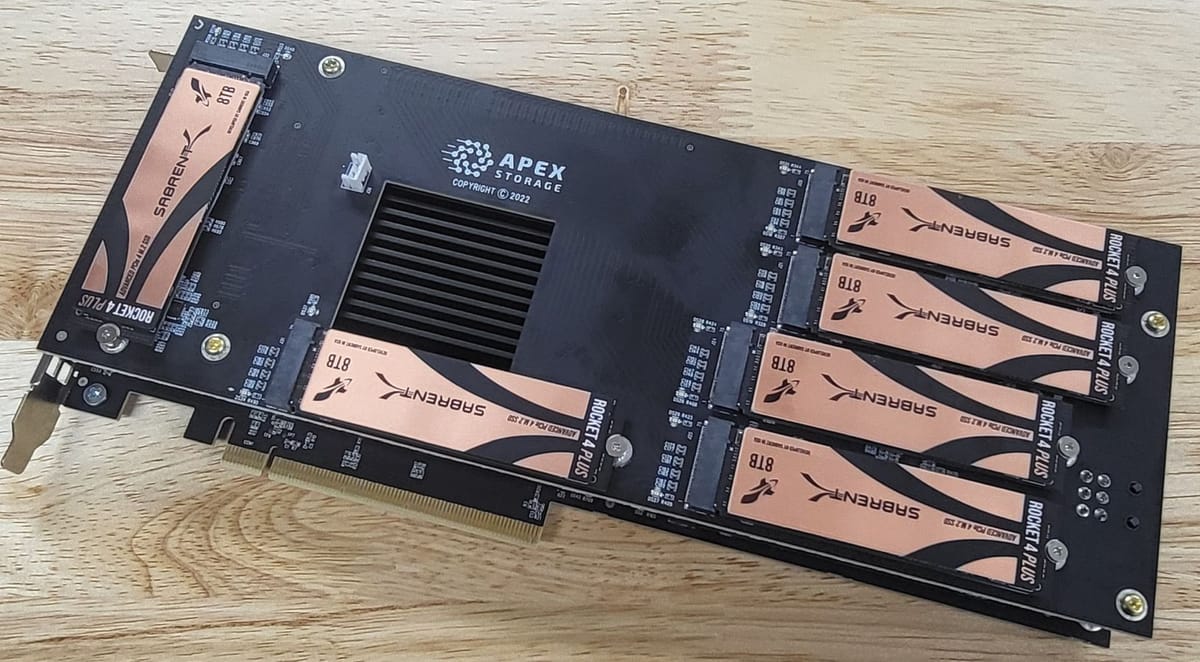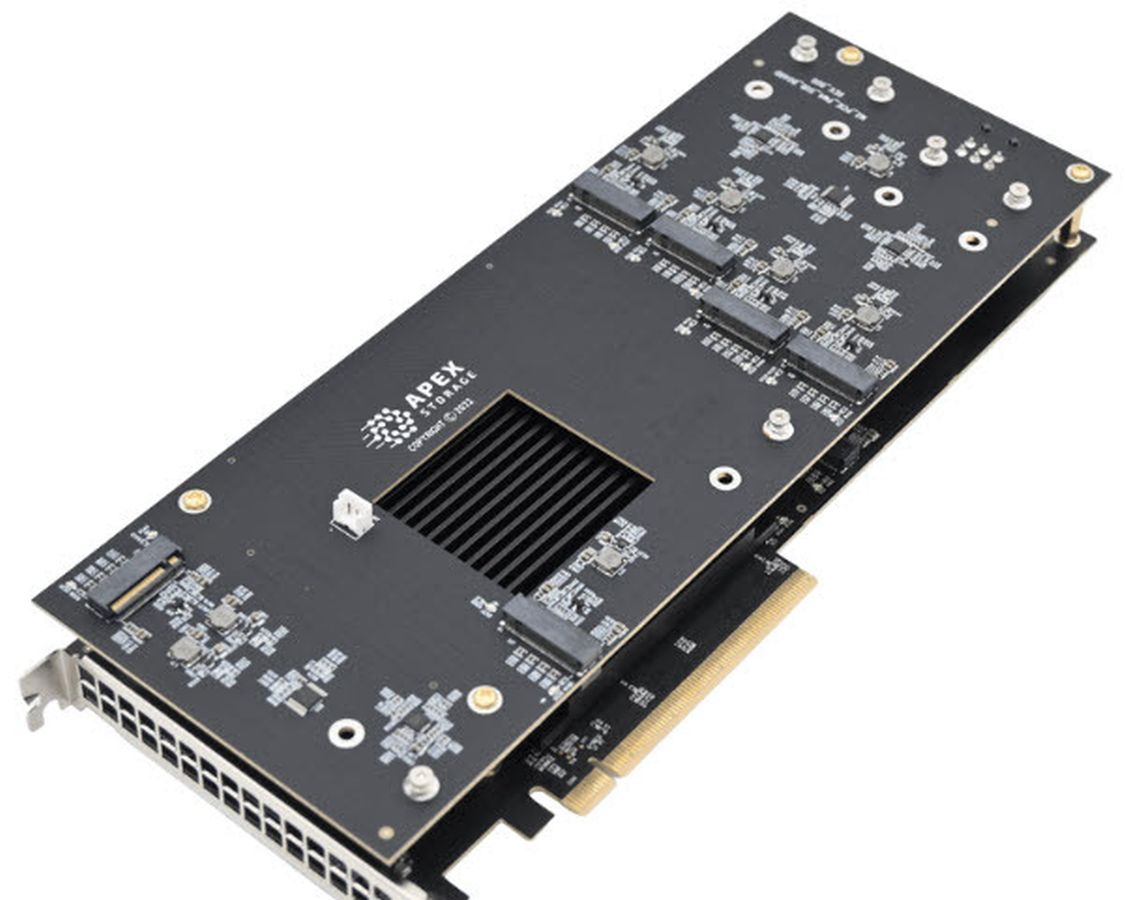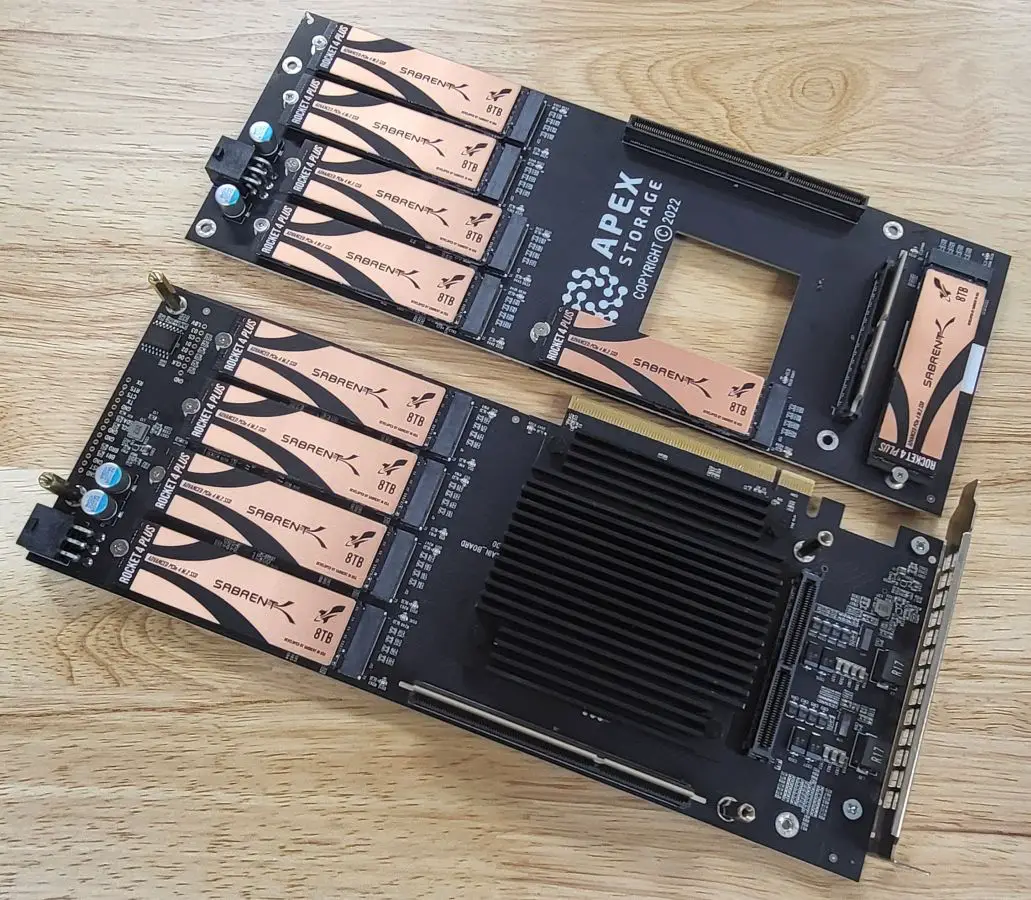
I thought I was overdoing it by putting my NVMe drives in RAID, but frankly that’s amateur hour. The team at Sabrent are working hard on their Gen5 NVMes, pushing them to their theoretical limits, but they have also released a truly enterprise class device for aggregating those drives — the Sabrent Apex X21 Destroyer. It’s aptly named as it can host a staggering 21 Gen4 M.2 NVMe SSDs for a whopping 168 TB of storage PER CARD. With read and write speeds at 31 GBps, and utilizing 100 PCIe 4.0 lanes, this is clearly aimed at the server marker which is far less constrained than a desktop environment. The supercomputers at the top tier of AI work often have thousands of processor cores with lanes to match, meaning that a high-end device like that could hold multiples of these beasts. And if that’s not enough, there’s already support for the next iteration of Gen4 NVMes, meaning that when we make the jump up to 16TB M.2 drives, the capacity follows, topping out at an eye-watering 336TB per card.

How much would this set you back? Well, the card itself is still in internal testing, but the drives would set you back roughly 23 grand. That sounds like a great deal of money, and it is, but compared to the cost of some advanced data set runs, it’s a pittance. The throughput is more than enough for advanced multi-user video and image editing, large file manipulation, and more. It’s beast!

My favorite part about these sorts of tech experiments is that they tend to be predictors of the future, revealing a great deal about hardware limitations that can then be solved in future revisions. While these may not be for you and me, there’s no doubt that it’s impressive.
